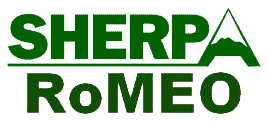Electron microscopic studies of ion- and H20-transporting epithelial cells in the horizontal ampulla of the pigeon
Keywords:
ampulla, planum semilunatum, dark cells, pigeon, electron microscopyAbstract
Earlier morphological studies of the epithelial structure in the semicircular canals of mammals have focused on the sensory cells of the crista ampullaris. This report draws attention to the fact that there exist at least seven further cell types in the horizontal ampulla walls of pigeon with various functions; the role of ion- and H20-transporting epithelial cells is dealt with here in detail. While the dark cells appear to play a decisive role in the regulation of ionic composition, the cells in the planum semilunatum may transport H20 and assist in the regulation of endolymph volume. In addition, protein-secreting structures are located in the apical region of the cells of the planum semilunatum. The question whether the proteins are dispersed in the endolymph or contribute to cupula formation remains unclear. The morphology and possible functions of these two cell types are discussed on the basis of electron microscopic results.Downloads
Downloads
Issue
Section
License
Las obras que se publican en esta revista están sujetas a los siguientes términos:
1. El Servicio de Publicaciones de la Universidad de Murcia (la editorial) conserva los derechos patrimoniales (copyright) de las obras publicadas, y favorece y permite la reutilización de las mismas bajo la licencia de uso indicada en el punto 2.
2. Las obras se publican en la edición electrónica de la revista bajo una licencia Creative Commons Reconocimiento-NoComercial-SinObraDerivada 3.0 España (texto legal). Se pueden copiar, usar, difundir, transmitir y exponer públicamente, siempre que: i) se cite la autoría y la fuente original de su publicación (revista, editorial y URL de la obra); ii) no se usen para fines comerciales; iii) se mencione la existencia y especificaciones de esta licencia de uso.
3. Condiciones de auto-archivo. Se permite y se anima a los autores a difundir electrónicamente las versiones pre-print (versión antes de ser evaluada) y/o post-print (versión evaluada y aceptada para su publicación) de sus obras antes de su publicación, ya que favorece su circulación y difusión más temprana y con ello un posible aumento en su citación y alcance entre la comunidad académica. Color RoMEO: verde.



